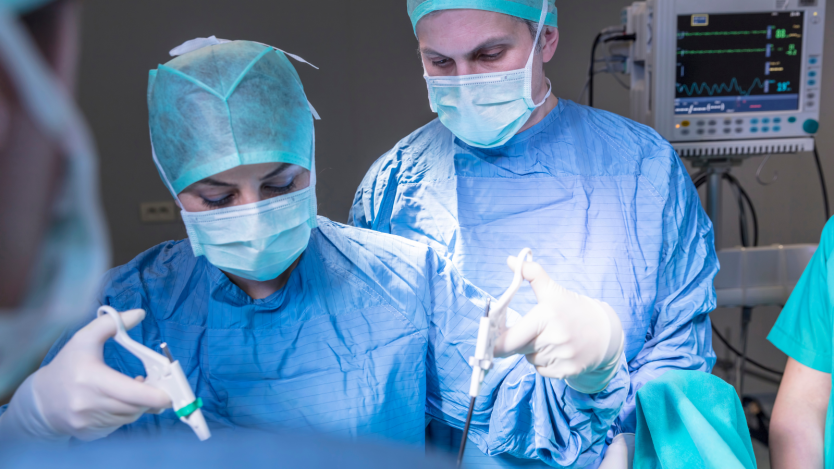Gallbladder surgery: laparoscopy or open surgery?

- Gallbladder surgery can be performed using different surgical techniques, the most common being laparoscopy or open surgery.
- Nowadays most gallbladder removals are performed laparoscopically, although in some cases open surgery is safer.
- The advantages in terms of safety and recovery are greater in laparoscopic surgery.
Gallbladder problems are often caused by gallstones. Gallstones are small stones that form in the gallbladder or bile ducts and cause pain, especially after eating large amounts of food or high-fat meals.

Do you need gallbladder removal surgery?
Request a free and immediate appointment with our specialists in General Surgery
If the pain is very persistent or the severity of the symptoms worsens, there is a possibility of developing cholecystitis, pancreatitis or even biliary peritonitis. To avoid future problems and improve the patient's quality of life, the best option in these cases is to perform a cholecystectomy (gallbladder removal).
To do so, there are different surgical techniques, but the most common are gallbladder removal by laparoscopy and conventional cholecystectomy by open surgery.
Gallbladder removal by laparoscopy
Nowadays it is the most commonly used technique to solve gallbladder problems. Normally this operation is performed with 2 or 3 mini incisions in the patient's abdomen, but there are variants in which the gallbladder is removed through the vagina (transvaginal laparoscopic cholecystectomy operation) or through the navel (transumbilical laparoscopic cholecystectomy operation).
The operation lasts between 1 and 2 hours.

Laparoscopy is characterised as a minimally invasive surgical technique, i.e. a technique that does as little damage to the tissues as possible.
This allows for a much shorter postoperative recovery, with a hospital stay of 0 to 2 days and a full recovery of 1 to 2 weeks. In addition, as an added advantage, using laparoscopy to remove the gallbladder avoids the unsightly scars of conventional open surgery.
In addition, technical advances have made it possible today to perform laparoscopic gallbladder removal operations using 3D technology, which allows the surgeon to observe the inside of the patient on a screen with depth and detail using 3D glasses. This improves the surgeon's precision and therefore safety for the patient.
Gallbladder removal by conventional open surgery
Cholecystectomy by conventional surgery is usually used in cases where it is not safe to perform the operation laparoscopically due to the patient's own characteristics. These factors are usually related to the associated pathologies of the patients or previous surgeries performed in the abdominal area.
Also, although this only occurs in a small number of cases, during laparoscopic surgery the surgeon may decide to switch from laparoscopy to open surgery for the patient's safety.

Do you need gallbladder removal surgery?
Request a free and immediate appointment with our specialists in General Surgery
Gallbladder removal by open surgery has a similar duration to laparoscopy, but has a much longer recovery time.
The hospital stay after this procedure is between 2 and 4 days, while full recovery can take up to 8 weeks. In addition, after the surgery the patient will have a scar of between 7 and 10 cm on the upper right side of the abdomen, the area where the gallbladder is located.
However, this surgery is also safe and effective, so if the patient is not a candidate for laparoscopy, he or she will be equally well treated with this technique. The only differences are the scar and the fact that it will take longer for the patient to be completely well.
To find out more about gallbladder removal surgery, click on one of the following links:
Medical disclaimer: All the published content in Operarme is intended to disseminate reliable medical information to the general public, and is reviewed by healthcare professionals. In any case should this information be used to perform a diagnosis, indicate a treatment, or replace the medical assessment of a professional in a face to face consultation. Find more information in the links below:
